目次
- 1 Trump 25% Tariff on Japan: July 2025 Policy Impact
- 1.1 President Trump’s Major Actions Since July 2025
- 1.1.1 July 1: Israel-Gaza Ceasefire Agreement Announcement
- 1.1.2 July 2: Major Announcements on Domestic Policies and Trade Agreements
- 1.1.3 July 4: $4.5 Trillion Tax Cut Bill Signed
- 1.1.4 July 7: Tariff Measures Suggested for BRICS-Aligned Countries
- 1.1.5 July 8: 25% Additional Tariff Notice to Japan – The Most Important Announcement for Japan
- 1.2 Multifaceted Impact on the Global Economy
- 1.3 Serious Impact on Japan’s Economy
- 1.4 Ishiba Administration’s Response and Impact on Upper House Election
- 1.5 Japanese Citizens’ Consciousness and Political Distrust
- 1.6 Local Government Initiatives – Nakano Ward Assembly Example
- 1.7 Impact on Japan-US Alliance and Diplomacy/Security
- 1.8 Energy Policy and Economic Security
- 1.9 Future Outlook and Challenges
- 1.10 Reference Links
- 1.1 President Trump’s Major Actions Since July 2025
Trump 25% Tariff on Japan: July 2025 Policy Impact
In July 2025, President Donald Trump’s policies are creating unprecedented waves across the global economy and Japan. Of particular note are the additional tariff measures on Japan and numerous other countries, triggering far-reaching economic and political repercussions. This article provides a comprehensive analysis of Trump’s detailed actions since July and their multifaceted impact on Japan’s economy, politics, and citizens’ lives, based on research materials.
President Trump’s Major Actions Since July 2025
July 1: Israel-Gaza Ceasefire Agreement Announcement
President Trump posted on social media that Israel had agreed to the conditions necessary for a 60-day ceasefire in Gaza. By announcing Middle East ceasefire agreements, he’s influencing financial markets. However, concerns remain that the ceasefire might end prematurely, with geopolitical risks continuing to be a factor for price increases.
July 2: Major Announcements on Domestic Policies and Trade Agreements
On this day, President Trump announced multiple important policies in rapid succession:
- Sued Los Angeles: Took legal action over the “sanctuary city” policy
- AI Talent Development Push: Announced initiatives with over 60 companies participating
- Strengthened Cuba Regulations: Clarified hardline stance toward Cuba
- Vietnam Trade Agreement: An important move amid US-China tensions
- Syria Sanctions Lifted: Lifted sanctions via executive order
The Vietnam trade agreement deserves particular attention. Vietnam is one of the countries that has benefited most from the “windfall profits” of intensifying US-China friction, but Trump has also announced surcharges on imports from third countries through Vietnam, leaving the treatment of products processed from Chinese raw materials unclear. China’s Ministry of Commerce has warned it will take countermeasures if Vietnam reaches agreements that harm China’s interests.
July 4: $4.5 Trillion Tax Cut Bill Signed
On Independence Day, President Trump signed the $4.5 trillion tax cut bill that had passed the US Senate. This bill also includes raising the federal debt ceiling by $5 trillion.
This tax cut is estimated to expand the federal deficit by $3.4 trillion over the next 10 years. Interestingly, Elon Musk has harshly criticized this tax cut bill as “catastrophic” and even suggested forming a new party.
While the tax cut bill resolves immediate cash flow risks, it leads to expanding federal debt and may raise concerns about stable absorption of US Treasury bonds. Since the Trump administration took office, “dollar flight” has been discussed, with fiscal-minded “dollar flight” becoming a conscious concern.
July 7: Tariff Measures Suggested for BRICS-Aligned Countries
President Trump mentioned the possibility of imposing an additional 10% tariff on countries aligning with BRICS’s anti-American policies. This led to dollar buying centered on emerging market currencies, also affecting USD/JPY.
This statement demonstrates that the Trump administration’s “America First” policy is a comprehensive protectionist policy targeting not just China but emerging markets overall.
July 8: 25% Additional Tariff Notice to Japan – The Most Important Announcement for Japan
President Trump notified that 25% additional tariffs would be imposed on imports from Japan starting August 1. This targets not only Japan but also the following countries and regions:
- Serbia, Bosnia and Herzegovina
- Indonesia, South Korea, Cambodia, Thailand, Bangladesh, Malaysia, Myanmar, Laos
- Kazakhstan
- Tunisia, South Africa
- Europe, etc.
President Trump has criticized Japan for not importing US rice despite rice shortages and for having low imports from the US compared to Japan’s auto exports to the US as “unfair,” showing a stance of not hesitating to raise tariff rates by 30-35%.
Furthermore, he suggested the possibility of nominating the next Fed Chair well before current Fed Chair Powell’s term expires next May. This is concerning as a move threatening central bank independence.
Multifaceted Impact on the Global Economy
Market Turmoil Caused by Tariff Policies
President Trump’s “America First” and “deal-oriented” policies are bringing significant uncertainty to the global economy.
Market Trends in the First Half of 2025:
- Distrust of President Trump’s tariff policies caused global investors to move away from America, leading to the dollar’s isolated weakness
- Funds shifted from America to Europe, strengthening European currencies like Swedish krona, Swiss franc, euro, Norwegian krone, and British pound
- Capital inflow to emerging markets accelerated, with the MSCI Emerging Markets Currency Index reaching record highs
About 75% of companies facing cost increases from tariffs respond that they will pass some of it on to customers, raising concerns about deteriorating real income and downward pressure on personal consumption.
The US reciprocal tariffs announced in early April were more severe than expected, causing markets to react strongly with stock markets in Japan, the US, and Europe plummeting. This shocked markets as content that denies the free trade system. However, as tariff surcharges were suspended for 90 days and optimistic views about trade negotiations emerged, markets recovered to pre-crash levels by early May.
Tariff negotiations reached their deadline on July 9, and if no agreement is reached, market volatility may increase further.
Fiscal Policy and Accelerating Dollar Flight
While the large tax cut bill passed by Congress resolves immediate cash flow risks, it leads to expanding federal debt and may raise concerns about stable absorption of US Treasury bonds.
Tariff policies tend to focus on “trade in goods,” but the proportion of “service trade” is increasing between Japan-US and US-EU, and since America has surpluses with both Japan and EU in service trade, the overall economic picture becomes more complex.
Rising Geopolitical Risks
While a temporary lull continues between Israel and Iran, concerns remain that the ceasefire might end in the short term. More than two years after the Ukraine crisis began, while international energy conditions have temporarily stabilized, oil prices continue at high levels around $80, with geopolitical risks remaining a potential price increase factor.
China continues to experience domestic demand stagnation due to the real estate recession, with a “deflationary export” structure being noted. South Africa’s rand is depreciating against the US dollar, though confidence in monetary policy remains high. The Brazilian real continues to rise against the dollar, with the Brazilian central bank’s repeated rate hikes bringing the policy rate to its highest level since 2006 (15%).
Serious Impact on Japan’s Economy
GDP Downward Pressure and Corporate Impact
Trump tariffs are feared to weigh on Japan’s economy, with future developments attracting attention. The negative effects of tariffs are “yet to come,” with Trump tariffs overall estimated to push down Japan’s GDP by 0.85%.
Survey results of Japanese companies:
- Short-term impact (within the next year): 40.7% of companies responded “negative impact”
- Medium to long-term impact (next 5 years): “Negative impact” increases to 44.0%
- Responded “don’t know”: 38.5% (indicating strong uncertainty)
The impact of US tariff increases is expected to manifest in the real economy in the second half of 2025. Particularly from July to September, external demand will weaken, and Japan’s economy is highly likely to fall into shallow negative growth.
Specific Corporate Impact
Concerns:
- Reduced demand due to declining domestic production in major industries like automobiles
- Cancellation of plans to expand into the US (actual cases in chemical and machinery manufacturing)
- Small and medium enterprises struggling (many already experiencing significant impact)
- Difficulty in sales forecasting in manufacturing (exports becoming difficult, production declining)
- Consumption decline due to high prices
- Major companies postponing capital investments
- Unpredictability due to sudden policy changes
The FY2025 ordinary profit plans of processing industries (large companies) have been downwardly revised by 7.1 percentage points from previous estimates due to tariff concerns, indicating that negative effects of Trump tariffs may materialize in the future.
If negotiations drag on, Japanese companies’ “price increase avoidance” strategy will reach its limits. If price pass-through begins, there are concerns about re-acceleration of US inflation; if avoidance continues, the burden will fall on domestic subcontractors.
Limited/Positive Impact:
- Agricultural product sales companies producing domestically benefit from difficulty in importing goods
- No direct impact on real estate or domestic service industries (entertainment services, etc.)
- Some view that Trump tariffs will ultimately be borne by Americans and move toward normalization
Stock Market Impact
After the Nikkei average recovered to near 40,000, it’s expected to enter a range-bound market from July to September as the positive factor of global markets’ “departure from America” offsets the negative factor of slowing global economies including Japan.
However, from October to December, both Japanese and US economies are expected to show signs of bottoming out, with Japan’s stock market entering an upward phase similar to the US stock market. Japanese stocks may outperform the US stock market in the second half of this year due to Japan’s unique positive factor of domestic demand recovery.
Domestic Price Measures and Wage Trends
Japan’s real wages have been negative for five consecutive months as of May 2025. However, from October to December, inflation is expected to fall to 2-2.5%, and combined with spring wage negotiations, real wages are expected to turn positive and domestic demand to recover.
Government Price Measures:
- Continuing fixed subsidies for gasoline prices (maximum 10 yen/liter)
- Released reserve rice to stabilize rice prices (national average price fell to 3,691 yen)
- Implementing subsidies for electricity and gas bills from July to September (increasing subsidy amounts especially in August when air conditioning use increases)
- Expected reduction effect of about 3,000 yen over 3 months for standard households
Komeito has stated it strongly promoted these price measures. Since tax cuts take time, the policy is to use tax revenue surpluses for cash benefits, focusing support on children and non-taxable households who receive less benefit from tax cuts.
Impact on Monetary Policy
From comments by BOJ Policy Board member Masu, who took office on July 1, 2025, it’s shown that uncertainty in Japan-US tariff negotiations remains unpredictable, with the view that “there’s no rush to raise rates.”
Policy Board member Takata likened US tariff policy to a “tariff typhoon,” expressing the view that it’s a phase to pause rate hikes. While showing recognition of progress toward the next rate hike due to continued solid movements in corporate capital investment and wage increases, he avoided mentioning timing due to significant overseas environmental uncertainty.
The BOJ is expected to explore resuming additional rate hikes somewhere after uncertainty diminishes while assessing the impact of Trump tariffs. The possibility of considering additional rate hike timing from late 2025 to early 2026 has also been noted.
Impact on Household Investment Appetite
Foreign securities investment through investment trusts in June continues to show modest movement even after the new NISA started. This is because uncertainty surrounding Trump tariffs is hindering investment appetite, with household sector investment appetite in a state of stagnation.
Ishiba Administration’s Response and Impact on Upper House Election
Prime Minister Ishiba’s Response and Declining Support Rate
In response to President Trump’s 25% tariff notification to Japan, Prime Minister Ishiba expressed it as “truly regrettable” while pointing out it’s essentially maintaining tariff rates and extending the negotiation deadline. Views exist that Prime Minister Ishiba’s lack of diplomatic ability could be a “fatal flaw” amid major international changes.
The Ishiba Cabinet’s support rate has fallen to 32.8%, with the following cited as factors:
- Dissatisfaction with economic policies
- Disappointment with social security policies
- Diplomatic blunders
- Political funding issues including the prosecution review committee’s “prosecution appropriate” decision regarding the Abe faction’s slush fund scandal
Japan-US tariff revision negotiations are showing signs of dragging on, with Japan losing priority in trade negotiations with the US and being “put on the back burner.” Negotiations between Minister Akazawa and US Treasury Secretary Bessen have not taken place.
27th Upper House Election and Party Policies
In the 27th Upper House election announced on July 3, price measures and responses to Trump tariffs have become major issues, with reports that it will be extremely difficult for the ruling coalition to maintain a majority.
Major Party Policies and Trends:
Liberal Democratic Party:
- Prime Minister Ishiba proposes 20,000 yen per person cash benefit (equivalent to food price increases excluding eating out and alcohol), but 70% of people don’t appreciate this in June surveys
- Regarding consumption tax cuts, expresses doubts that legal and system changes take time and wealthy people benefit more
- Appeals to conservative supporters by advocating measures against foreign driver’s licenses and real estate ownership issues
Komeito:
- Five pillars for Upper House election priorities: “Living support through tax cuts and benefits,” “Income increase for working generation,” “Enhancement of social security,” “Safe and secure Japan,” “Peace and stability in international society”
- Appeals achievements including increasing childbirth lump sum (to 500,000 yen), reducing gasoline and rice prices, electricity/gas subsidies, abolishing policy activity expenses, freezing review of high-cost medical care system
- Fighting tough election battle aiming for all candidates to win in 7 districts and 7+ seats in proportional representation (total 14+ seats)
- Also proposes creating rent subsidy system for low-income and child-rearing households
Constitutional Democratic Party:
- Advocates “regime change is the greatest political reform”
- Leader Noda spent half his speech on rice policy, advocating 0% consumption tax on food products
Democratic Party for the People:
- Appeals “politics that increases take-home pay” as flagship policy
- Significantly increased seats in Tokyo metropolitan assembly election
- Great leap forward analyzed as “hybrid populism” directly reflecting voices of “forgotten people” in policies
- Supports defense capability enhancement and defense spending expansion but emphasizes domestic defense industry development
- Also advocates active cyber defense law, human resource development, spy prevention law, strengthening foreign land acquisition regulations, improving energy self-sufficiency (new nuclear plants)
Sanseito:
- Advocates “Japan First”
- Gains support from those feeling “the country is declining” and “existing parties and politicians don’t care about people like us”
- Regarding Trump tariffs, seeks review of domestic automobile-related taxes and government support for auto industry
Reiwa Shinsengumi:
- Leader Yamamoto strongly advocates price measures and consumption tax abolition
- Regarding Trump tariffs, proposes negotiating as a group with Southeast Asian and “Global South” countries rather than 1-on-1 with the US
- Opposes bringing agriculture (especially rice liberalization) into trade negotiations
Japanese Communist Party:
- Aims to abolish consumption tax, advocates urgent reduction to 5%
- Also criticizes government’s defense spending increases
Japan Conservative Party:
- Most strongly advocates price measures while also focusing on foreign policy
Social Democratic Party:
- Advocates “livelihood over missiles, peace over missiles,” objecting to defense budget allocation
Japanese Citizens’ Consciousness and Political Distrust
According to Ipsos’s “Populism Report 2025” (announced June 18, 2025), serious changes are seen in Japanese consciousness:
- 70% of Japanese feel “our country is declining” (3rd highest among 31 surveyed countries)
- This pessimistic view increased about 1.8 times over 9 years
- 68% of Japanese feel “existing parties and politicians don’t care about people like me”
- Significant increase from 39% in 2016
- Expectations for politics haven’t recovered, especially after the COVID pandemic
Youth voter turnout is particularly low, below 20% for those in their 20s, with distance from politics being an issue. Young people say politics is complex and hard to understand, and concrete problem-solving isn’t progressing. However, they’re not uninterested in politics, showing interest in economic measures and opinions like “Japan First” due to concerns about troubles accompanying increasing foreigners.
In June’s Tokyo metropolitan assembly election, the LDP suffered a major defeat and Komeito couldn’t achieve all candidates winning, showing the ruling coalition struggling. Meanwhile, the Democratic Party for the People significantly increased seats with the slogan “increase take-home pay.”
Local Government Initiatives – Nakano Ward Assembly Example
In Nakano Ward Assembly’s February 2025 regular session, discussions were held on strengthening the comprehensive community care system and building consultation support systems that leave no one behind, ahead of the “2025 problem” when baby boomers become elderly.
Ward Mayor’s Recognition and Response:
- Recognizes that real wages aren’t keeping up with price increases
- Acknowledges need for support for those in poverty
- Considering air conditioner purchase subsidies for low-income households
- Considering establishing consultation services during year-end/New Year holidays
Other Measures:
- Creating ward’s own scholarship system for university advancement (proceeding with comprehensive consideration system in FY2025)
- Policy to eliminate upper limit on reappointment of fixed-term employees without public recruitment to secure stable human resources
Impact on Japan-US Alliance and Diplomacy/Security
Wavering US Commitment to Japan
Three scenarios are considered for US defense commitment to Japan, with Japan currently recognized as being somewhere between the first and second:
- Maintaining as before
- Taiwan unclear but Japan important
- Commitment to Japan also becomes unclear
The Trump administration has a strong consciousness that Europe is free-riding on American security and is basically moving to reduce military involvement. While the US plans to withdraw from Europe and focus on China and the Indo-Pacific, this could also lead to wavering defense commitment to Japan.
Japan’s Response Strategy
Japan needs to make efforts at all levels to ensure the US recognizes that “peace and prosperity in the Indo-Pacific, Asia, and Japan are directly connected to America’s peace and prosperity.” It’s important to involve the US through defense capability enhancement and deepening Japan-US defense cooperation, with a strategy that doesn’t let China or North Korea think they can separate the US.
Building new frameworks is required to make the US recognize Japan as an indispensable economic partner and rediscover the alliance’s value. It’s proposed to return to the starting point that the Japan-US alliance is not a “purpose” but a “means to protect Japan’s national interests.”
Defense Minister Nakatani proposed the “OCEAN Initiative” (openness, inclusiveness, transparency, restoration of rules-based international order, etc.) to advance defense cooperation and collaboration with Indo-Pacific countries. Promotion of multilateral cooperation centered on the Asia-Pacific, such as the Japan-US-Australia-India joint training “Malabar,” is expected.
The Serious Problem of Declining Trust in the US
Trump tariffs turning “Global South” countries into enemies and causing trust in the US to collapse all at once is also a major concern for Japan’s national interests. The ground is spreading where countries that have lost trust in the US find China or Russia attractive.
The possibility that the Japan-US alliance might become not an “asset” but a “burden” for Japan has been pointed out, and Japan needs to convey this to the US. Turmoil is spreading in Europe, with voices fearing the possibility of being abandoned by America, and discussions of independence like “Plan B” are being discussed with more reality than in Japan.
Following the suspension of Ukraine support, Europe’s consciousness that it cannot continue relying on the US has increased, not wanting its future decided by the US and Russia. New movements toward European strategic autonomy are emerging, such as the UK and France advancing troop deployment for security.
Energy Policy and Economic Security
Japan’s energy policy is heavily influenced by geopolitical risks such as the prolonged Ukraine war, Taiwan situation, and policy changes resulting from US presidential election results (such as suspension of LNG export permits).
Discussion on Nuclear Power Utilization
- Japan has nuclear technology and excellent human resources but is criticized as “treasure going to waste” by not utilizing them
- Public anxiety about nuclear power (confusion between scientific safety and psychological security) and media fear-mongering are seen as problems
- High-level radioactive waste (nuclear waste) disposal site construction is a common challenge for nuclear-using countries
- Accident risks and fuel supply problems of aging thermal power plants are also pointed out
- The necessity of energy problem education in compulsory education is also proposed
Renewable Energy and Fossil Fuels
- Achieving carbon neutrality and strengthening energy security requires comprehensive concept design including production, transmission networks, and energy conservation, plus international cooperation
- Various solutions are available including renewable energy like solar, wind, geothermal, and hydroelectric power, plus e-methane/synthetic natural gas, biogas, CO₂ capture, nuclear power, storage batteries, low-carbon hydrogen, and ammonia
- Natural gas plays an important role in energy security during energy transition, with LNG demand particularly surging in Southeast Asia
- Stable supply of US LNG is expected to contribute to regional economic growth and strengthening US presence
Future Outlook and Challenges
The Trump administration’s tariff policy is criticized as protectionist and unilateralist policy that fundamentally overturns the postwar free trade system order. While this tariff policy is temporarily causing major ripples, how the international economic order changes depends on future negotiations to see what is lifted and what remains.
Policy uncertainty itself from tariff imposition may dampen corporate capital investment appetite and weigh on the economy. If prices rise in America and Republican lawmakers’ local industries are hit by retaliatory tariffs, political backlash may emerge.
For Japan, it’s important to continue negotiations aiming for agreements that benefit both Japan and the US while protecting national interests. At the same time, domestic price measures and real wage improvement are urgent, with government response attracting attention.
The deepening global division (US-China confrontation, West vs. China-Russia confrontation, etc.) is bringing emphasis on comprehensive security including economic security. Japan physically cannot deal with China alone, and while maintaining its alliance with the US, a strategy of promoting multilateral cooperation and diversifying risks is required.
These survey results show that Trump administration policies are having enormous impact on domestic and international economies, with trade policies in particular bringing uncertainty to Japanese corporate performance and investment appetite. Additionally, price increases and political distrust are spreading among Japanese citizens domestically, potentially affecting future political situations.
Reference Links
Public Institutions
- Prime Minister’s Office of Japan
- Ministry of Foreign Affairs of Japan
- Ministry of Finance Japan
- Ministry of Economy, Trade and Industry
- Bank of Japan
- Cabinet Office
- Ministry of Defense
Related Articles
- Trump’s 25% Tariff Hike Impact on Japan and US Trade Negotiations
- EU-US Trade Talks and 10% Tariff Impact
- Trump Tariffs July 9: Impact on Japan’s Auto Industry
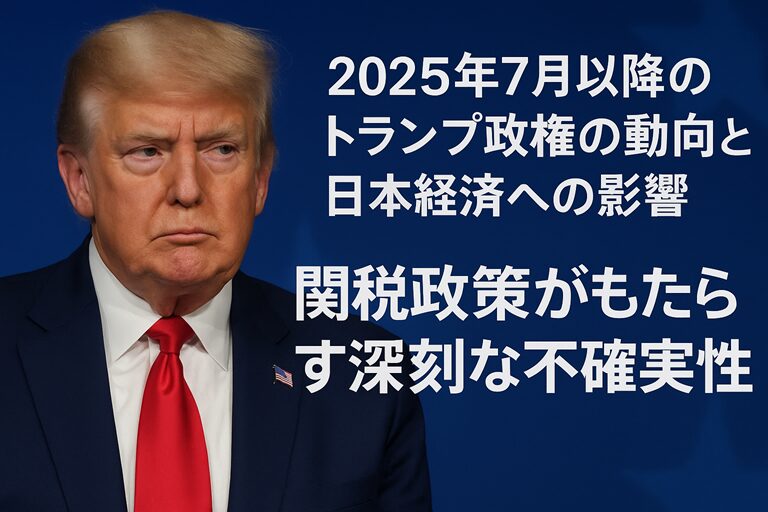

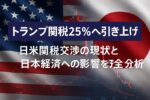


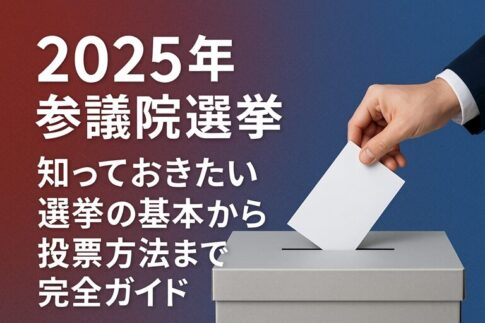

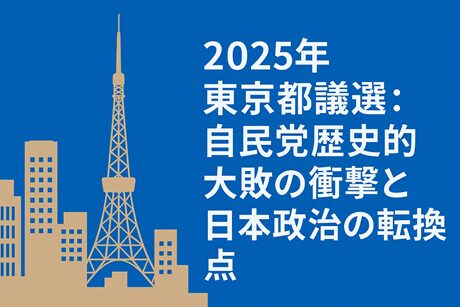


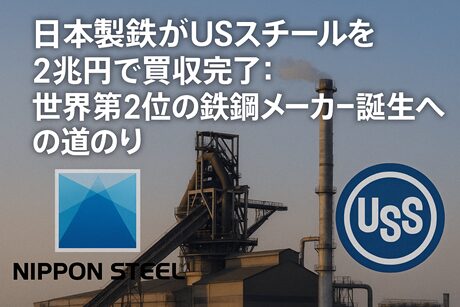


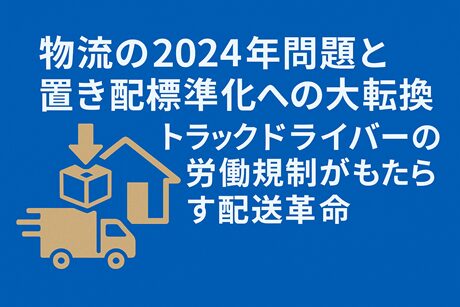

Leave a Reply